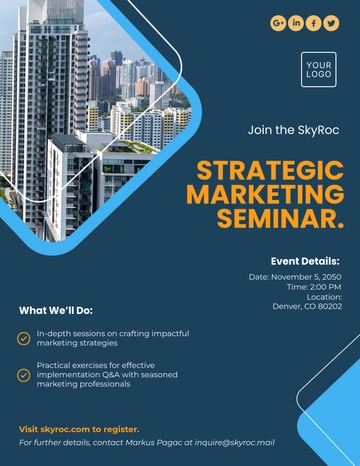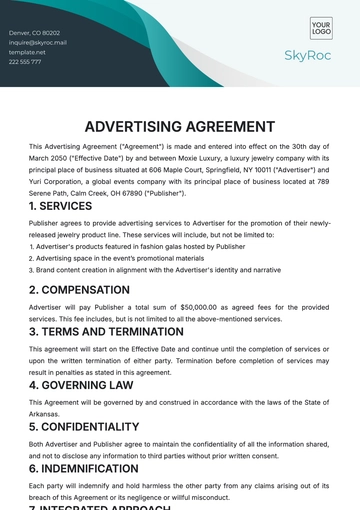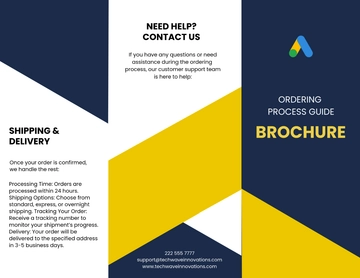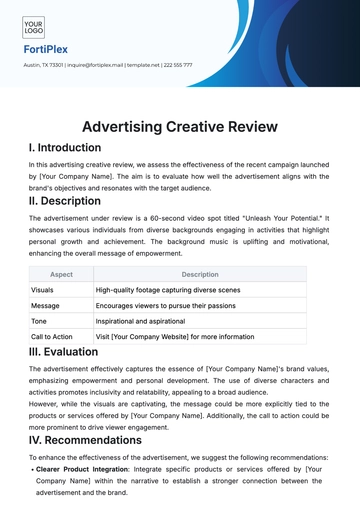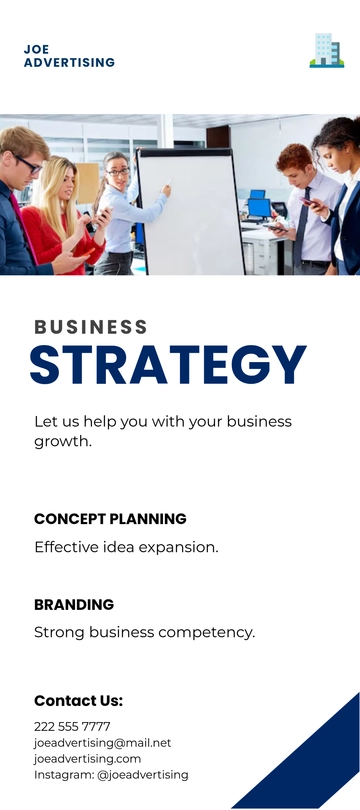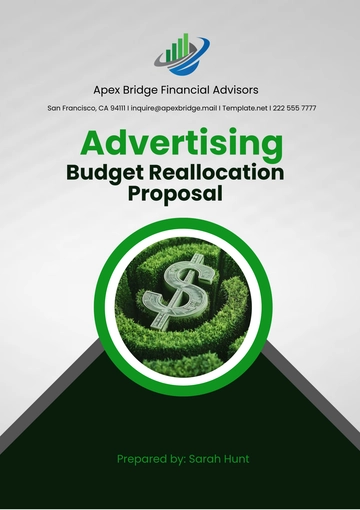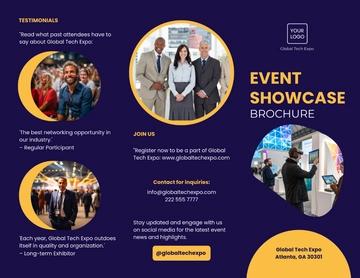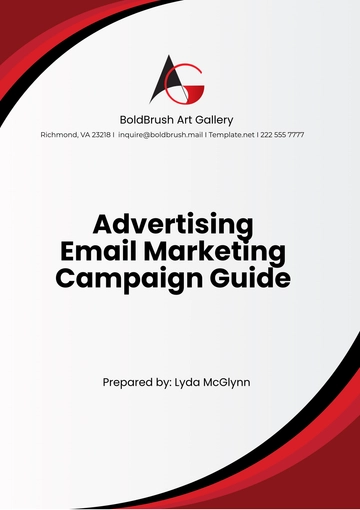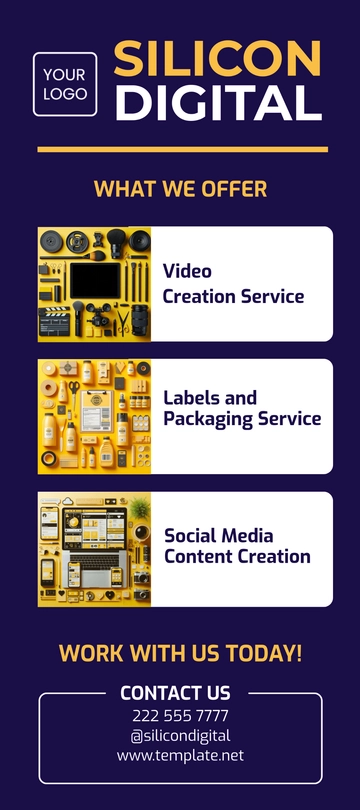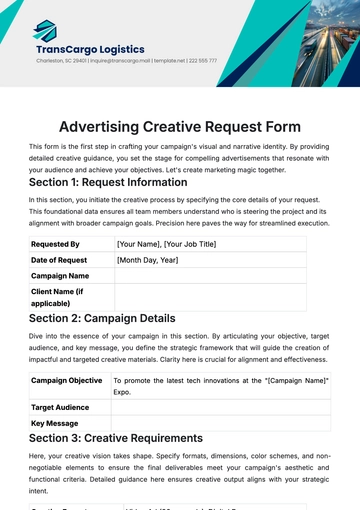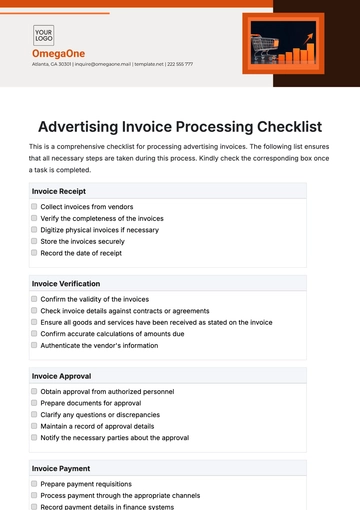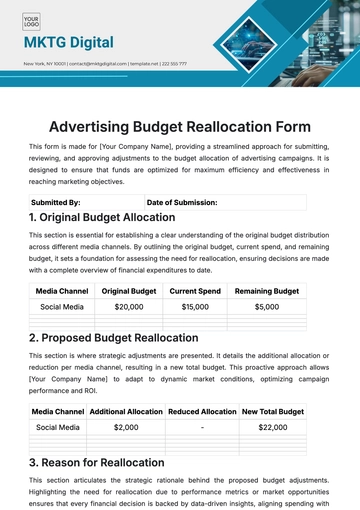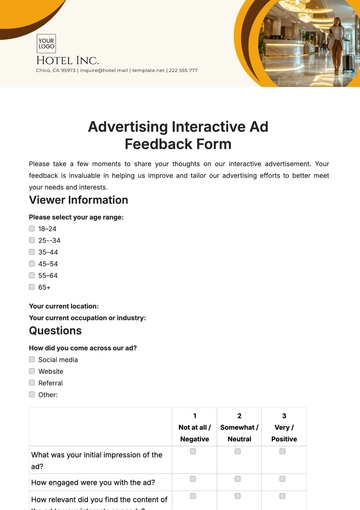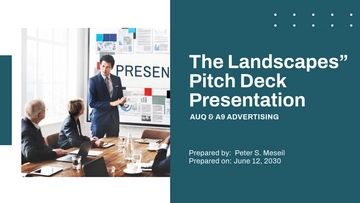Free User Engagement Optimization Advertising Study
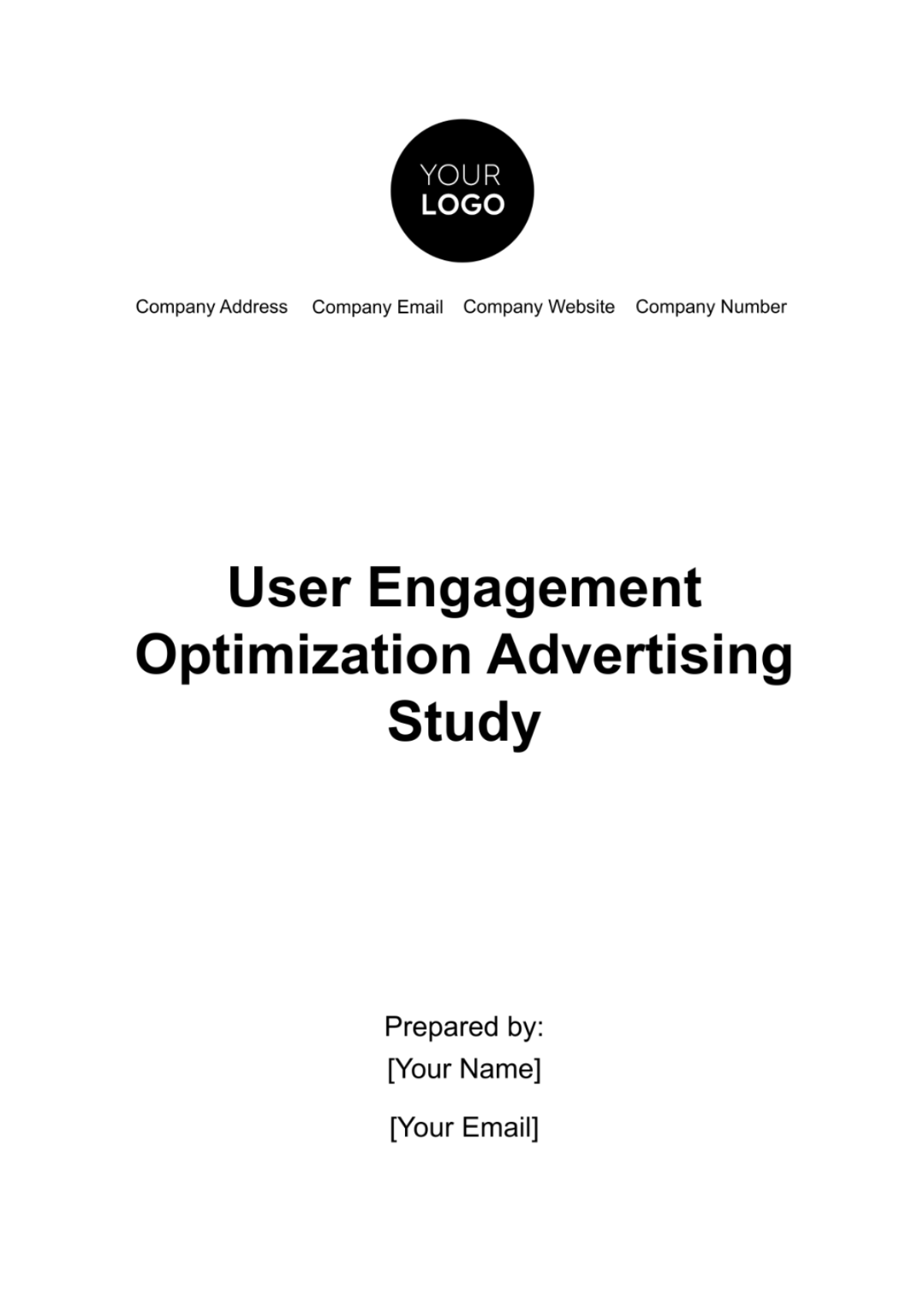
Advertising Study
Executive Summary
In the digital frontier of 2055, [Company Name] stands at the forefront of innovation, committed to elevating its position in the digital advertising industry. This User Engagement Optimization Advertising Study meticulously examines the current state of [Company Name]'s strategies, emphasizing the pivotal role of Data Analytics and Artificial Intelligence in understanding user behavior and shaping targeted advertising campaigns. The synthesis of Data Analytics provides unparalleled insights into user interactions, while Artificial Intelligence emerges as the virtuoso orchestrator, facilitating a new era of personalized and hyper-targeted advertising that transcends traditional boundaries.
Moreover, the study delves into the heart of user experience, unraveling the intricacies of [Company Name]'s digital touchpoints through a critical evaluation of website and app design. By meticulously mapping and scrutinizing user journeys, the analysis goes beyond mere functionality, capturing the emotional beats of user interactions. The culmination of these efforts manifests in concrete recommendations for UX improvements, offering [Company Name] a transformative roadmap to not only meet but exceed user expectations. As [Company Name] navigates the dynamic digital landscape, this study serves as a strategic guide, positioning the company to thrive in an era where user engagement, innovative technologies, and an exceptional user experience define success.
Introduction
Overview
In 2055, where the digital advertising landscape is marked by continuous innovation, [Company Name] stands as a beacon of pioneering excellence. Since its inception, [Company Name] has been at the forefront of revolutionizing digital advertising, navigating through the evolving preferences and expectations of consumers with unwavering adaptability. This section delves into the rich historical tapestry of [Company Name]'s journey, highlighting pivotal moments and strategic pivots that have shaped its trajectory.
From the early days of the digital era to the cutting-edge advancements of the present, [Company Name] has consistently anticipated and embraced change, positioning itself as a trailblazer in the industry. The digital canvas upon which [Company Name] paints its advertising endeavors reflects not only its commitment to innovation but also its acute understanding of the dynamic nature of consumer behavior.
Objectives of the Study
The intricacies of [Company Name]'s success are intertwined with its ability to discern and respond to the nuanced demands of the market. In light of this, the primary objective of this study is to embark on a comprehensive exploration of [Company Name]'s advertising strategies. By peeling back the layers of its current approach, the study endeavors to uncover the underlying strengths that have propelled [Company Name] forward, as well as the weaknesses that warrant attention and refinement.
Beyond an internal analysis, this study seeks to cast a discerning eye on the broader landscape, identifying opportunities ripe for exploration and threats that may pose challenges to [Company Name]'s continued success. The culmination of these insights will pave the way for a strategic roadmap dedicated to the optimization of user engagement—a roadmap designed to not only navigate the current terrain but also to anticipate and adapt to the shifts that lie ahead in the ever-evolving digital ecosystem.
This dual-pronged approach aims to position [Company Name] not merely as an industry leader but as a visionary trailblazer, propelling it toward a future where user engagement is not just optimized but seamlessly integrated into the fabric of every digital interaction. As [Company Name] embarks on this journey of self-discovery and strategic refinement, the stage is set for a new chapter in its legacy—one that continues to resonate with the dynamic needs of the digital consumer in 2055.
Overview of the Digital Advertising Industry in 2055
The year 2055 marks a pivotal moment in the evolution of the digital advertising landscape, characterized by an amalgamation of cutting-edge technologies and evolving consumer behaviors. As consumers seamlessly navigate hyperconnected world, advertisers are compelled to adapt to novel paradigms. This section provides a nuanced snapshot of the prevailing trends, emerging technologies, and the competitive landscape that collectively shape the contours of the digital advertising industry in this era of unprecedented innovation.
In 2055, the digital advertising landscape is characterized by a fusion of immersive technologies, personalized experiences, and a deep integration of artificial intelligence. Augmented Reality (AR) and Virtual Reality (VR) have become ubiquitous tools, enabling advertisers to create captivating and interactive campaigns that transcend traditional boundaries. The rise of the metaverse has redefined the concept of online presence, presenting both challenges and opportunities for advertisers to engage with audiences in virtual realms.
Moreover, consumers in 2055 demand a seamless blend of entertainment and information, making native advertising and branded content integral components of successful campaigns. The convergence of data analytics and artificial intelligence has ushered in an era of hyper-personalization, where advertisements are tailored with precision to individual preferences, behaviors, and demographics. Blockchain technology ensures transparent and secure transactions, addressing concerns related to data privacy and fostering a trust-centric advertising ecosystem.
Competitive Analysis
In the pursuit of excellence, [Company Name] is subjected to a rigorous comparative assessment against industry benchmarks, embodying the essence of the ever-competitive digital advertising space. This analysis delves into key performance indicators (KPIs) such as market share, customer satisfaction, and innovation metrics, providing a comprehensive understanding of [Company Name]'s position within the dynamic marketplace.
A. Market Share: [Company Name]'s market share is evaluated against industry peers, identifying areas of growth and potential market expansion. The analysis delves into regional and demographic variations, offering insights into the effectiveness of [Company Name]'s market penetration strategies.
B. Customer Satisfaction: A critical metric in the digital advertising landscape, customer satisfaction is meticulously examined through consumer feedback, surveys, and sentiment analysis. [Company Name]'s ability to meet and exceed customer expectations is scrutinized, providing valuable insights into brand loyalty and consumer retention.
C. Innovation Metrics: In the fast-paced world of 2055, innovation is the lifeblood of success. [Company Name]'s commitment to staying at the forefront of emerging technologies, creative strategies, and novel advertising formats is evaluated. This analysis includes an exploration of recent campaigns, technological integrations, and collaborative initiatives that position [Company Name] as an industry innovator.
User Engagement Metrics
In the relentless pursuit of digital advertising excellence, [Company Name] relies on robust Key Performance Indicators (KPIs) to gauge and refine its strategies. This section delves into the evolving landscape of user engagement metrics over the past five years (Year 1 to Year 5).
The data from the five-year analysis of [Company Name]'s user engagement metrics reveals a compelling trajectory of growth and continuous improvement. In Year 1, the baseline metrics, including a Click-Through Rate (CTR) of 3.5%, Conversion Rate of 10%, and Customer Retention Rate of 65%, laid the foundation for [Company Name]'s initial endeavors in user engagement optimization. Notably, the Comparative Analysis highlighted that [Company Name] outperformed industry averages across all metrics, signaling a strong foothold and potential for future advancements.
Building on this foundation, Year 2 showcased a notable uptick in [Company Name]'s performance, with a CTR of 4.2%, Conversion Rate of 12%, and Customer Retention Rate of 70%. The sustained growth was attributed to targeted content strategies and enhanced user segmentation, as evidenced by the consistent outperformance against industry benchmarks. In Year 3,
[Company Name] marked a strategic shift with an increased emphasis on personalized experiences and the integration of emerging technologies, resulting in a CTR of 4.8%, Conversion Rate of 14%, and Customer Retention Rate of 75%. The Comparative Analysis highlighted [Company Name]'s continued leadership, consistently surpassing industry averages.
Year 4 witnessed [Company Name] embracing cutting-edge technologies such as augmented reality, contributing to a CTR of 5.5%, Conversion Rate of 16%, and Customer Retention Rate of 80%. The innovative approach and sustained efforts led to a widening gap between [Company Name]'s performance and industry norms, reinforcing its position as an industry frontrunner. By Year 5, [Company Name] solidified its reputation with a CTR of 6.2%, Conversion Rate of 18%, and Customer Retention Rate of 85%. The integration of artificial intelligence and a relentless focus on user-centric strategies propelled [Company Name] to surpass industry averages, concluding the five-year journey with exceptional user engagement metrics and a promising outlook for the future.
Current [Company Name] Advertising Strategies
In navigating the dynamic landscape of digital advertising, [Company Name] employs a multifaceted approach encompassing various channels to maximize its reach and impact. This section provides an in-depth analysis of [Company Name]'s current advertising strategies, offering insights into the selection and utilization of diverse channels, the effectiveness of content and creatives, and the precision of target audience segmentation.
A. Overview of Current Advertising Channels
[Company Name] has strategically embraced a spectrum of advertising channels to engage with its audience across different touchpoints. This includes a robust presence on social media platforms, leveraging the power of influencer collaborations and community engagement. Additionally, [Company Name] has embraced innovative search engine marketing strategies, ensuring a prominent and strategic presence in online search results. The immersive experiences offered by augmented reality (AR) and virtual reality (VR) have been seamlessly integrated into [Company Name]'s advertising portfolio, providing consumers with interactive and memorable brand interactions.
B. Assessment of Content and Creatives
A critical component of [Company Name]'s advertising prowess lies in its content strategy, which is meticulously crafted to resonate with the target audience. The assessment delves into the relevance, appeal, and resonance of creatives, evaluating their effectiveness in conveying the brand message. By incorporating cutting-edge visuals, compelling storytelling, and staying attuned to current cultural nuances, [Company Name] ensures that its content remains not only visually striking but also emotionally resonant. This strategy aims to create a lasting impression on the audience, fostering brand recall and loyalty.
C. Analysis of Target Audience Segmentation
Effective audience segmentation is the cornerstone of successful advertising, and [Company Name] recognizes the importance of aligning segmentation strategies with consumer behavior. The examination of target audience segmentation strategies reveals [Company Name]'s commitment to delivering personalized experiences. Through data-driven insights and market research, [Company Name] tailors its messages to specific demographics, ensuring that each audience segment receives content that is not only relevant but also addresses their unique needs and preferences. This alignment enhances the overall effectiveness of [Company Name]'s advertising efforts, fostering a deeper connection with the diverse segments that constitute its consumer base.
Challenges and Opportunities
This section meticulously dissects the identified challenges faced by [Company Name], encompassing market saturation, ad fatigue, and the perpetual evolution of consumer expectations. Simultaneously, it explores the promising horizon of emerging trends and opportunities, encapsulating the potential offered by cutting-edge technologies, shifting consumer preferences, and untapped market segments.
Identified Challenges | Emerging Trends and Opportunities |
Market Saturation: [Company Name] acknowledges the prevalent challenge of market saturation, where the digital landscape is densely populated with content from various competitors. The examination reveals the strategic considerations undertaken by [Company Name] to rise above the noise, emphasizing differentiation, innovation, and a keen understanding of market dynamics. | Technological Advancements: The integration of cutting-edge technologies such as artificial intelligence, augmented reality, and virtual reality presents unprecedented opportunities for [Company Name]. |
Ad Fatigue: Addressing ad fatigue is a priority for [Company Name], recognizing the risk of diminishing returns when audiences become oversaturated with advertising messages. This challenge prompts a reassessment of frequency, timing, and content delivery, ensuring that [Company Name]'s advertising remains impactful and avoids the pitfalls of becoming repetitive or intrusive. | Shifting Consumer Preferences: Consumer preferences are dynamic, influenced by cultural shifts, societal values, and technological advancements. [Company Name] keenly explores these shifts, leveraging insights to tailor its offerings. |
Data Analytics and Artificial Intelligence Integration
In 2055, the marriage of Data Analytics and Artificial Intelligence (AI) stands as a cornerstone for [Company Name]'s quest to revolutionize user engagement in advertising.
Role of Data Analytics:
In this era of information abundance, Data Analytics emerges as the compass guiding [Company Name] through the intricate nuances of user behavior. By delving into vast datasets, Data Analytics provides a profound understanding of user interactions, preferences, and journey touchpoints. This invaluable insight unveils patterns, identifies trends, and enables [Company Name] to decode the intricacies of consumer behavior with unparalleled precision. Through the lens of Data Analytics, [Company Name] gains the ability to discern not just what users do but also why they do it, fostering a deep comprehension that becomes the bedrock of strategic decision-making.
Leveraging Artificial Intelligence:
The realm of Artificial Intelligence beckons [Company Name] into a realm of limitless possibilities, where personalized and hyper-targeted advertising is not just a goal but a reality. AI becomes the virtuoso orchestrator, infusing campaigns with a level of personalization that transcends traditional boundaries. By seamlessly integrating AI algorithms, [Company Name] propels itself into a future where every interaction is curated to resonate with individual users. From predictive analytics that foresees user preferences to machine learning algorithms that adapt in real-time, AI transforms campaigns into dynamic, responsive entities.
User Experience (UX) Enhancement
In the digital epoch of 2055, [Company Name] recognizes the pivotal role of User Experience (UX) as the linchpin of its digital presence. The following sections illuminate our approach to refining and elevating the user experience across all digital touchpoints.
Evaluation of Website and App Design
The digital facade presented by [Company Name]'s websites and apps serves as the initial handshake with users, and as such, demands meticulous scrutiny. Our critical analysis delves into the core of design elements, evaluating the user interface for its visual appeal, functionality, and alignment with contemporary design trends. Navigation is assessed not merely as a functional component but as a seamless journey, ensuring that users effortlessly traverse through the digital landscape. Moreover, the holistic evaluation extends to the overall user experience, scrutinizing every interaction point to guarantee a harmonious and immersive encounter.
By dissecting the anatomy of [Company Name]'s digital touchpoints, we seek not only to identify areas of excellence but to pinpoint elements that, when refined, will elevate the user experience to unprecedented heights.
User Journey Analysis
The digital journey is more than a series of clicks; it's a narrative woven by user interactions. Our meticulous mapping and scrutiny of user journeys transcend the quantitative, venturing into the qualitative realm to identify the emotional beats of each user's experience. Pain points are not mere obstacles but opportunities for refinement, and our analysis dissects these moments with surgical precision. By understanding the intricacies of user journeys, [Company Name] gains the insights needed to streamline paths, eliminate friction, and create journeys that are not just functional but delightful.
In essence, the User Journey Analysis is a narrative unraveling, guiding [Company Name] through the story that users tell with every interaction. This narrative, once deciphered, becomes the blueprint for enhancing not just the journey but the entire user experience.
Recommendations for UX Improvements
The culmination of our evaluation and analysis is distilled into a set of concrete recommendations that transcend generic advice, providing actionable insights tailored to [Company Name]'s unique digital footprint. These recommendations serve as a compass, guiding the transformation of digital touchpoints into experiential landscapes.
From design refinements that enhance visual appeal to navigational adjustments that streamline user paths, our recommendations are rooted in a deep understanding of [Company Name]'s audience and their evolving expectations. Accessibility, responsiveness, and personalization are not just buzzwords but pillars upon which our recommendations stand, ensuring that [Company Name] not only meets but exceeds user expectations.
- 100% Customizable, free editor
- Access 1 Million+ Templates, photo’s & graphics
- Download or share as a template
- Click and replace photos, graphics, text, backgrounds
- Resize, crop, AI write & more
- Access advanced editor
Introducing the User Engagement Optimization Advertising Study Template by Template.net. Crafted for marketers seeking dynamic insights, this editable and customizable tool harnesses AI Editor technology to refine advertising strategies. Elevate engagement, streamline analysis, and drive results with this innovative template, exclusively designed to amplify your advertising endeavors.
